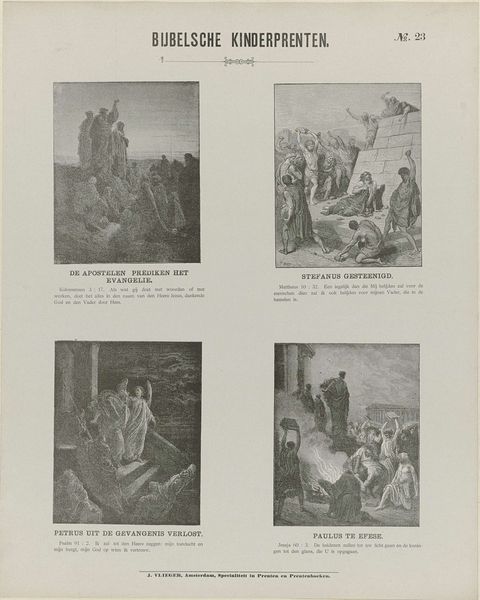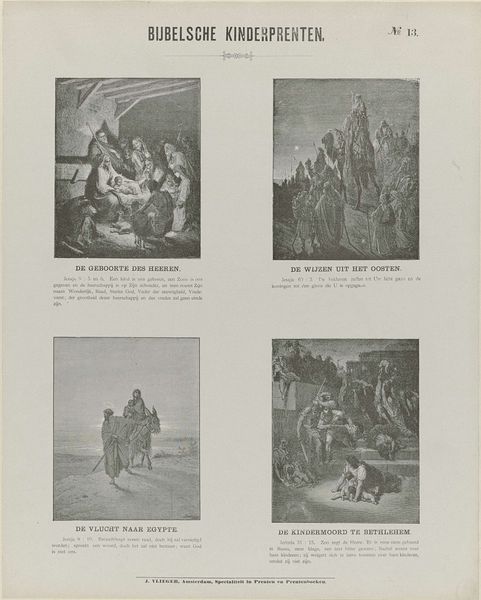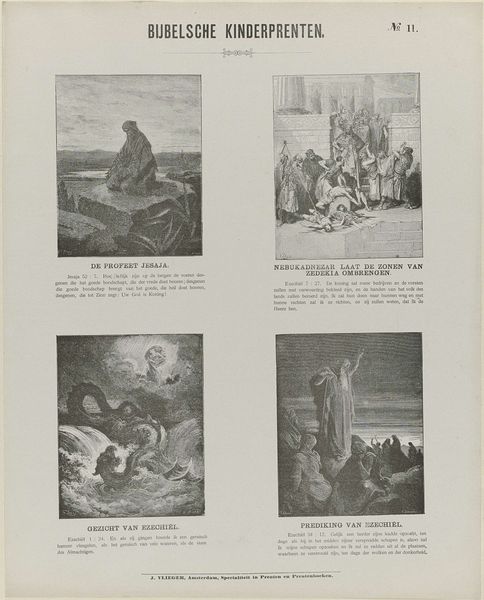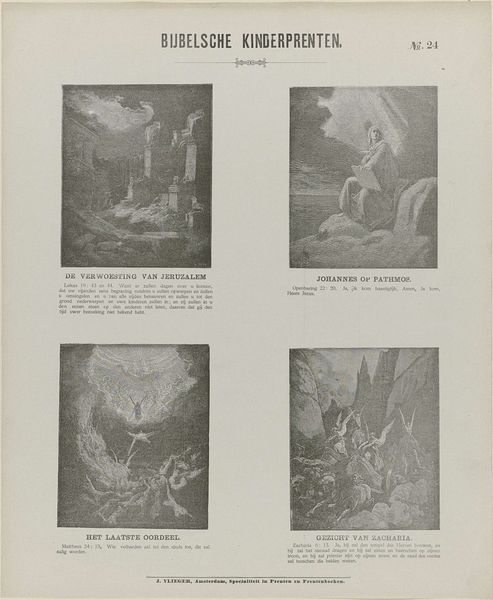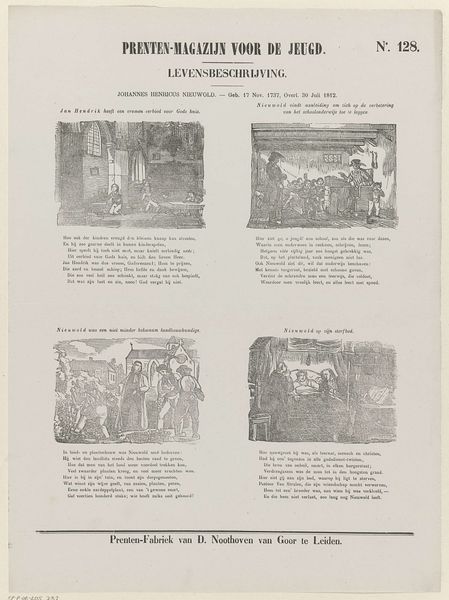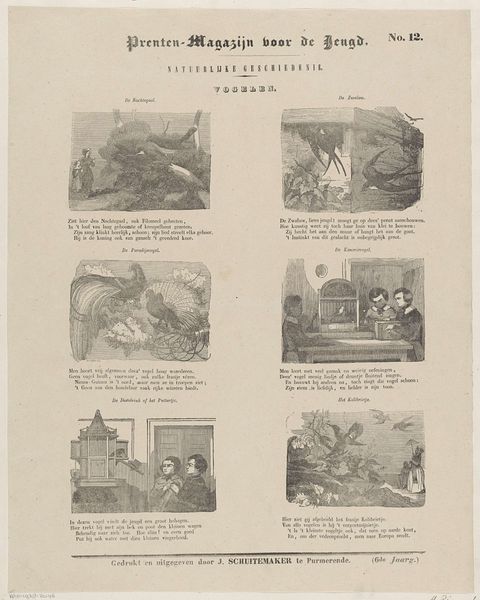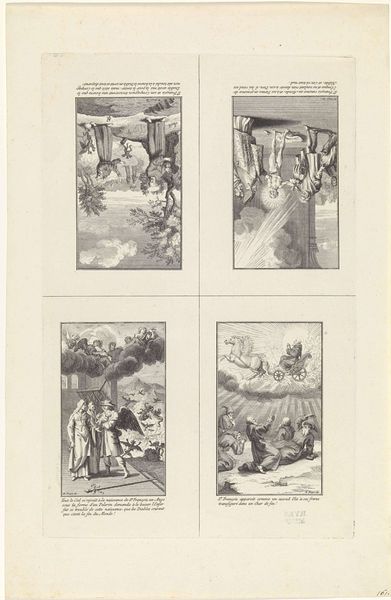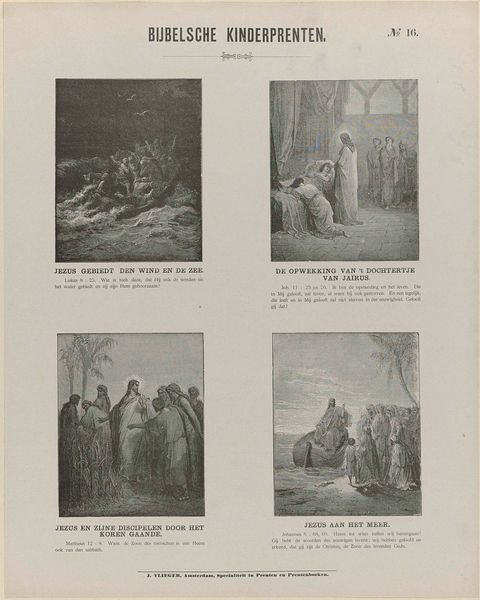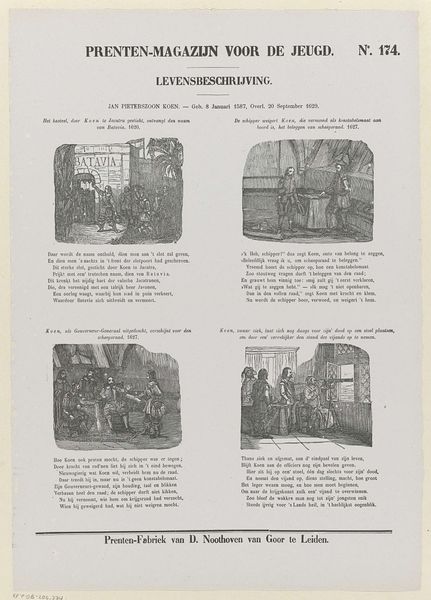
graphic-art, print, engraving
#
graphic-art
#
narrative-art
# print
#
history-painting
#
engraving
Dimensions: height 430 mm, width 347 mm
Copyright: Rijks Museum: Open Domain
Héliodore Joseph Pisan created "Bijbelsche Kinderprenten," a print on paper, sometime in the mid-19th century. These aren't traditional art materials. Paper is a mass-produced substrate, made from pulped wood, which is suggestive of the industrial revolution. The work's material influences its appearance, with the inherent qualities of paper providing a surface for conveying religious stories through a series of four vignettes. Pisan likely used a printing press, a technology that democratized image production, enabling the widespread dissemination of visual narratives. Consider the labor involved. From forestry workers harvesting trees for paper pulp to the skilled artisans operating the printing press, the creation of this work reflects broader social issues of labor, politics, and consumption. The mass-produced nature of the print underscores its accessibility to a wide audience, challenging traditional distinctions between fine art and craft. It’s a reminder that materials, making, and context are vital in fully understanding an artwork.
Comments
No comments
Be the first to comment and join the conversation on the ultimate creative platform.
